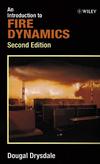by Hans-Werner Wabnitz
The
Willingham's trial story recounts a horrific tragedy. The story of a Texas State assassination. The failure of the legal system in a criminal arson case, where the “players” were induced into false intellectual security by self-content, even arrogant, arson investigators.
The case highlights several issues:
The necessity to have smoke detectors in every home / office, and the risk of using any open heat source (heater, stove).
The necessity that experts - here arson investigators - consider state-of-the-art scientific knowledge, as opposed to mere reliance on experience and folklore. Beware of hubris!
The problem that courts are being taken hostage by technical expert-witnesses (here a criminal court, but valid also for civil cases)
The failing of supposedly “fool-proof” legal institutions (not only in the US!) intended to guarantee “fair trial” and avoid the miscarriage of justice, because of human complacency.
The importance of well trained, smart, dedicated and resourceful lawyers, questioning “the obvious” and the assumptions underlying principal arguments - as well as finding a competent expert.
In the case a father of three young children who burned to death in a house-fire received the death penalty because arson investigators testified that the fire “must have been set by a liquid fire accelerator”. Later on a serious expert, having studied the evidence, concluded that this accusation was bogus and none of the “convincing evidence” held up to scrutiny.
This case may become the first documented capital punishment case in Texas (with shock-waves throughout the other US states still clinging to capital punishment) where a factually and legally innocent person has been put to death. Hopefully it will give the opposition to capital punishment enough ammunition to win their case.
The case highlights the risk of, and pitfalls caused by intellectual arrogance, even hubris, of the technical expert (arson investigator), and the serious damage it can cause. Here they were practitioners, but the same hubris aflicts professionals from academia as well - see the sure-footedness of economists explaining the markets over the last years. Engineers, relying on the “laws of nature”, as like to justify their findings, must be aware that this is not as simple as it sounds, and that the deduction of cause and effect always involves human logic, which may be fallible let alone being misguided by religious beliefs, such as advocating “intelligent design”). Lawyers face the same challenge, as they may easily misjudge the applicability of a rule to given facts.
All are prone to lack of rigor, to intellectual lethargy and reliance on the maxim: “that’s how we always did it”, instead of questioning the obvious, checking assumptions.
But the case also demonstrates the power, benefits and striking result of rigorous scientific research, relying on measured experiments and careful analysis. This approach freed another inmate from death row in a very similar arson case. Unfortunately it came too late for the accused in question here.
Hans-Werner Wabnitz
Dr. Jur. (Freiburg) LL.M. (Tulane. NO La)
HW at Wabnitz.com
























